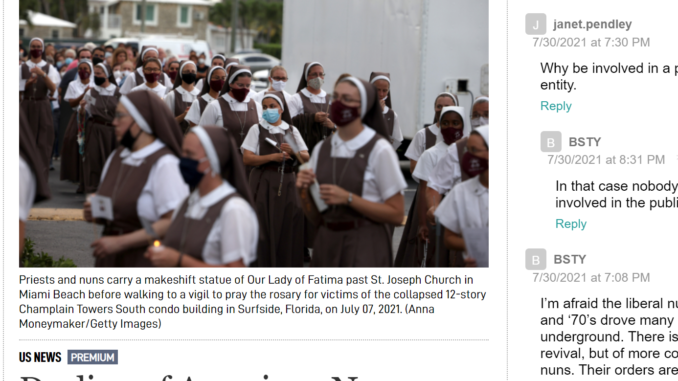
Opening Insights: Led by Faith
Faith gives us the ability to walk a journey of purpose without the promise of a destination.
The journey unveils its secrets only when we are ready to embrace them.
RICHARD JORGENSEN
The following article was published by The Epoch Times, "the fastest-growing independent news media in America." It was written by Jackson Elliot, reporter for The Epoch Times.
Informational Insights: Healthcare and Education
A generation ago, about 181,000 Catholic women in religious orders provided Americans with affordable healthcare and effective private schools. Today, only 38,000 are left struggling to run charity organizations designed for nearly five times their number, leading schools and hospitals to close or privatize.
In American history, nuns and sisters in religious orders have been a quiet but influential force for good. Nuns focus on contemplation, while sisters focus on service. In 1960, sisters provided one in five hospital beds and educated about one in 10 American children.
According to Georgetown University’s Center for Applied Research in the Apostolate, sisters worked on salaries that were often only a third of what other employees at Catholic religious institutions were paid. In 1965, this foregone salary saved Catholic schools alone an estimated $3.5 billion in 2017 dollars.
There’s also a quality difference between charity institutions run by sisters and institutions run by others, said Sister Mary Bendyna, the executive director of the Council of Major Superiors of Women Religious (CMSWR), America’s second-largest association of sisters.
“A hospital can still continue to provide quality medical care. But there’s a deeper spirit too—a care for the person,” said Bendyna, adding that with hospitals, “there tends to be more of a business model that ends up taking over.”
Often, sisters care for patients in a more personal way than doctors do, said Sister Mary Carton, a 73-year-old sister at Wheaton, Illinois’s, Marian Joy Motherhouse.
Once, a friend of Carton’s was dying of cancer in a hospital where sisters worked, she said. When Carton first visited, she found the hospital room was designed for hospital staff, not patients.
“The room was set up for the convenience of the attendants,” said Carton. “But for my friend, the chairs were so far away and she couldn’t sit up very high. To look her in the eyes, I had to stand and bend over the bed.”
But a sister serving at the hospital noticed the problem, Carton said. She ordered new chairs that allowed patients to better see the faces of their loved ones.
“The doctors and the nurses just didn’t have that need,” said Carton. “The nuns have a very fine sense of hospitality. The nuns are aware of the needs and the anxieties of family much more.”
Despite their important work, sisters have been the worst-paid branch of Catholic clergy, according to Sister Patricia Wittberg, a sister and professor at Georgetown University.
Although sisters often historically chose to live in poverty to help others, they also faced exploitatively low wages for their service, said Wittberg. Their salaries were far lower than priests and other equivalent workers.
“Sisters couldn’t adequately fund their retirement. It was a Ponzi scheme,” she said. “You assumed that young people were going to keep entering and earning $300 a year and that old people would die. In addition, the priests are paid more than that.”
Many older sisters still pay the price for these low wages today, Wittberg said.
Despite these sacrifices, many women in the 1960s saw becoming a sister as the opportunity of a lifetime, Carton said.
As a child, Carton said she dreamed of becoming the Pope, becoming a priest, or starting a Catholic school on Mars because her dad worked in the space program.
“Nothing was impossible,” she said. “But I met this group of women who knew women could do much and together they could provide the freedom, joy, prayer life, and community that would support generous giving of yourself.”
Many of the sisters she knows have a similar story. In 1960, women could either be secretaries, teachers, or nurses, said Carton. Society expected them to give up these careers when they got married. Becoming a sister and living a life of community service opened an entirely different path.
But today, Catholic women have more career choices, Carton said. Fewer become sisters.
“Look at the opportunities for young women to be in medical professions, to be a lawyer, to be anything they want to be,” said Carton. “Thank God for that! I just think God’s working in a whole new way.”
Even as opportunities outside women’s religious orders have grown, opportunities for sisters have become more difficult to access, said Wittberg. Today, jobs in teaching and medicine require college degrees that take years to earn.
Professionalization of these fields sometimes improves the quality of work, Witteberg said. But some jobs with high credential requirements don’t actually need much training.
“I would argue that professionalism isn’t the only way to go. But I would also argue strongly that it’s not completely useless,” she said. “There are times when it’s a really, really important thing to do, to make sure you’re doing.”
Different people within the Catholic Church emphasize different explanations on why fewer American women become sisters today.
Bendyna said changes in Catholic religious orders established during the 1965 Vatican II Council also changed the way women served the church.
Orders of sisters affiliated with the CMSWR, where Bendyna serves, have some of the highest joining rates. The CMSWR has a reputation for maintaining traditions. Many of their members still wear habits.
However, Wittberg said that women won’t start becoming sisters in large numbers if all religious orders became more traditional. The traditional orders get more publicity and pull a larger share from a smaller pool of prospective sisters.
“People say, ‘Gee, if all the sisters in the country were to go back into the habit, they’d all get 10 or 20 women entering religious life,’” she said. “And the reason that they wouldn’t is because the larger Catholic population has changed radically.”
The recruiting problems sisters struggle with are so severe that some orders haven’t gained a new member in years, said Bendyna. This situation is further complicated by the fact that most sisters today are 58 years old or above. Without younger sisters to support older congregations, some orders face financial difficulties.
To deal with this problem, many orders have consolidated. Carton’s 400-year-old order, the Institute of the Blessed Virgin Mary, shrunk from 200 American groups to only two today. Soon, the order will have only one chapter, she said.
“They’ve been slowly merging and we’re down to two,” said Carton. “And that merger will be in the next few years.”
For some orders, the problem of shrinking orders and retiring sisters has resolved itself neatly yet bittersweetly. When they lack sisters to live in motherhouses, maintain schools, and run hospitals, orders sell these assets. Some of the money goes to paying for the retirement of sisters. The rest gets distributed to charity.
Because women’s religious orders don’t share a common leadership, it’s hard to know how much money and property they’ve sold, said Father Thomas Gaunt, a priest and researcher at Georgetown University.
But the properties sisters own can sometimes be very valuable. When the sisters at Marian Joy Motherhouse sold the local hospital they once operated, they received $28 million for it.
Once an order passes a certain point of decline, it’s almost impossible to revive, Bendyna said. When sisters don’t receive new members, sell their property, and find their population slowly aging or dying, it’s over.
“Some people haven’t had anybody join in 20 or 30 years,” said Wittberg. “It simply ain’t gonna happen.”
But sisters tend to say their orders are “coming to completion,” not dying, said Bendyna.
Catholicism has a long tradition of religious orders rising and falling, said Wittberg. Devout believers start institutions, institutions lose zeal as they grow, and the devout lose interest. Then it happens again.
“It’s like crabgrass. You cannot get rid of it. It will spring up again,” she said. “I just can’t tell you how.”
https://www.theepochtimes.com/decline-of-american-nuns-costs-charities-billions_3926368.html
This article was published on July 30, 2021 by THE EPOCH TIMES: Decline of American Nuns Costs Charities Billions
Possibilities for Consideration: A Power Too Great
To stand against the immense power behind the technology, internet and financial organizations in charge of our government, media and education institutions we must get smarter and do it together.
AwareComm® offers a platform that provides the resources and the guidance to meet this challenge.
It’s not just that we need a solution, in this new environment nobody will trust, everybody is angry, nobody listens, commerce stops, efficiency diminishes, nobody cares.
Our culture consists of perception, attitude, thinking and behavior and we have created a culture now rooted in distrust, fear and anger.
The following models illustrate the psychology of fear and control
being used to force America to its knees.
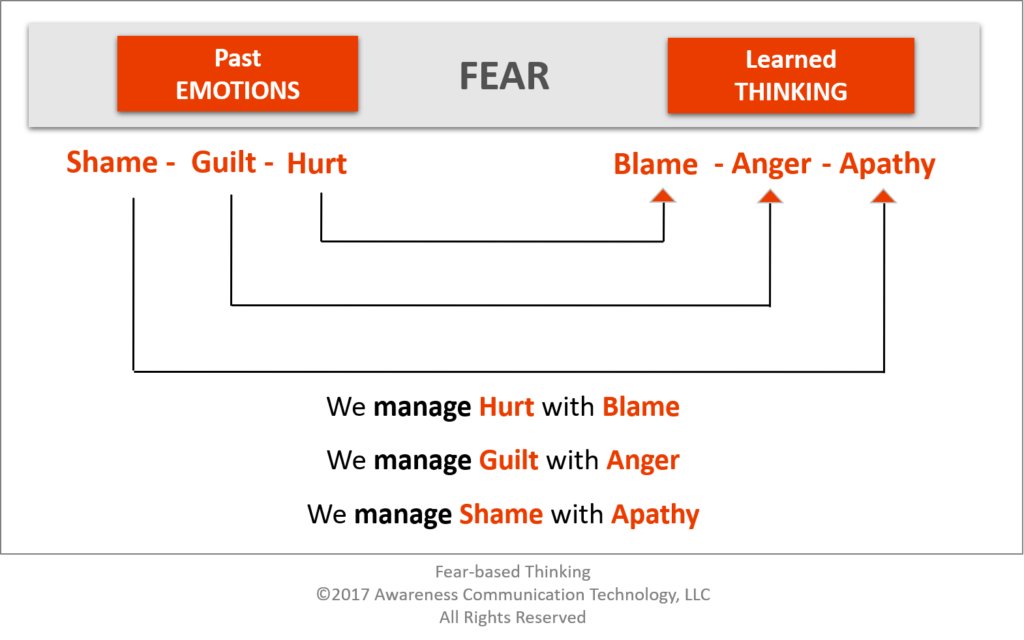
Once people are conditioned emotionally to accept fear as a foundation perception, they become willing candidates to accept the principles of control. Thus, they become slaves to the authority, that being government, propaganda or social media influence.
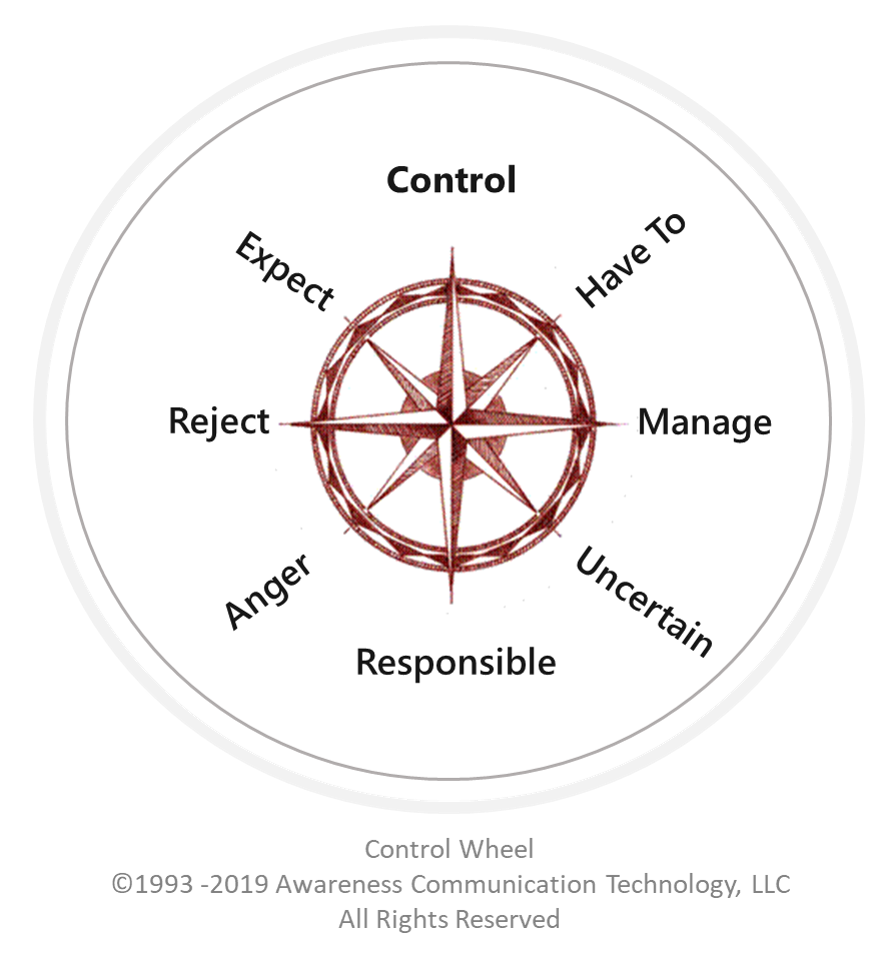
Whatever we do, however we do it, this becomes the basis for how we will build relationships at home, work, worship and play. These models will permeate all dimensions of our lives and must be reversed if our communities and our country are to survive.
The Real Solution: Founded in Spiritual Principles
A real solution, fully developed (tested, proven and paid for), is found in AwareComm's proprietary Adaptive Intelligence (AdI™) algorithm.
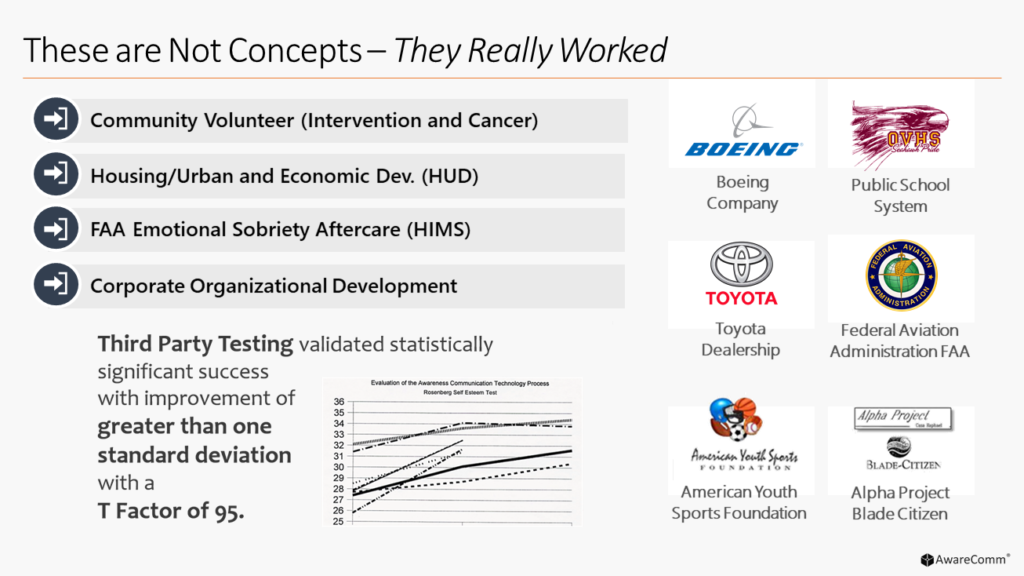
The AdI™ algorithm aligns with the intent of Pope Francis's call for a 'Good Algorithm,' to reverse the damage done by the irresponsible use of technology.
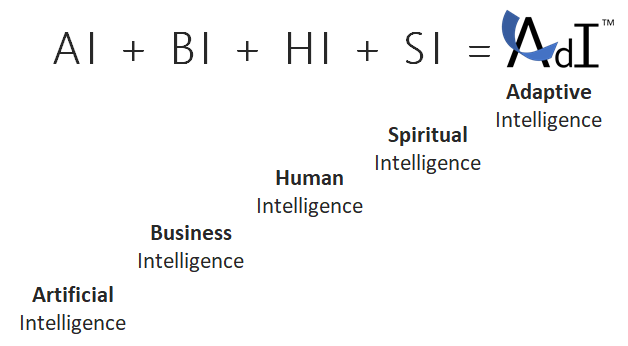
Rebuilding Community Commerce - - Rebuilding the Soul of a Community
AwareComm's AdI™ algorithm is available in a community Collaboration Laboratory (Co-Lab™) Research and ePublishing Institute, where people learn to take charge of their communities by transcending adversity to diversity and solidarity through the application of responsible commerce. Success is assured by applying the principles of Adaptive Intelligence to entrepreneurial thinking using socially responsible capitalism.
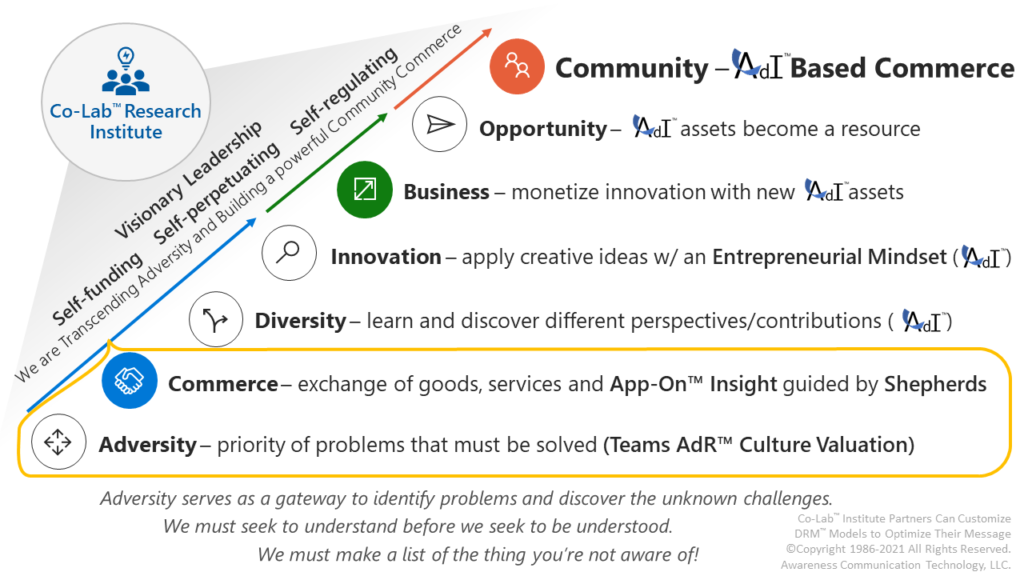
What comes from an established foundation of commerce rooted in spiritual principles and AdI™ is a new business model. This business model, for the application of Socially Responsible Capitalism, is our theme and driving inspiration.
A Co-Lab™ is the implementation mechanism of the result of 30+ years of field research.
Co-Labs™ create an environment conducive to learning, solidarity and change (old ideas are more quickly learned and new ideas are more quickly accepted and implemented).
Our Next Step
The AwareComm® Team is attracting partners in order to awaken in the people a desire for peace and solidarity as a way to fulfill their personal needs.
Through a careful blend of AI + BI + HI + SI the Co-Lab™ Research Institute has the correct balance of technology, methodology, human understanding, spiritual principles and data science to put us on the right track to individual social and cultural empowerment.
Due Diligence classes offer a deeper dive into the Co-Lab™ Research and ePublishing Institute to determine if this philosophy is effective for your community. You will learn:
- The logical power of the AI + BI + HI + SI = AdI™ algorithm for communication and learning
- The communication power of Co-Lab™ Research and ePublishing Institute to provide secure:
- self-funding
- self-perpetuating
- self-regulating networks
- The commerce power of Socially Responsible Capitalism, blending nonprofit and commercial applications
- The application of Social Partnerships, bringing ethical business principles to overcome social challenges
- The joy, satisfaction and pride of taking a role in returning our world to a state of freedom and opportunity - being proud to be a patriot
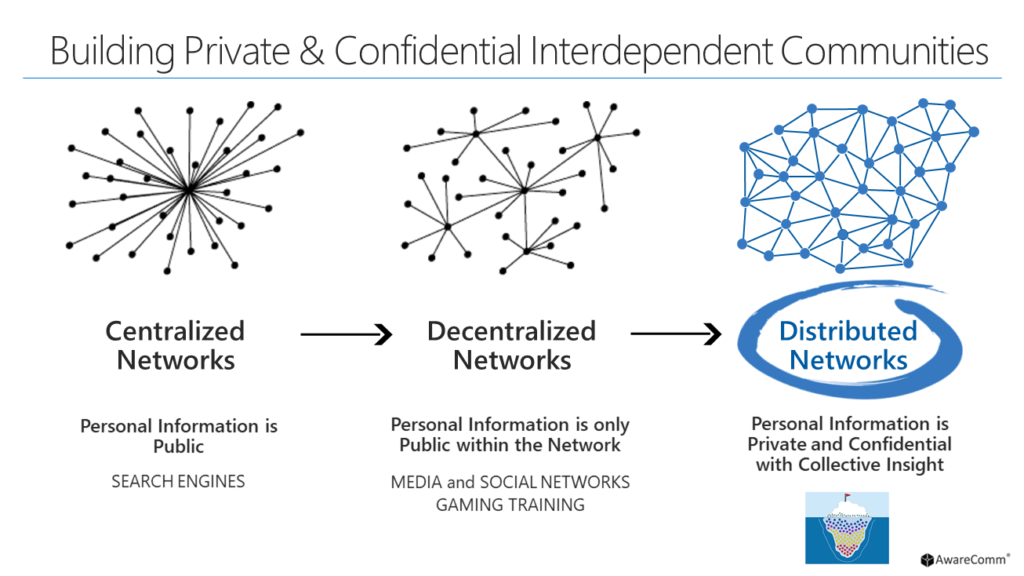
Inviting Potential Partners
For more information
and to receive your invitation to a Due Diligence class
email: SOS@AwareComm.com
